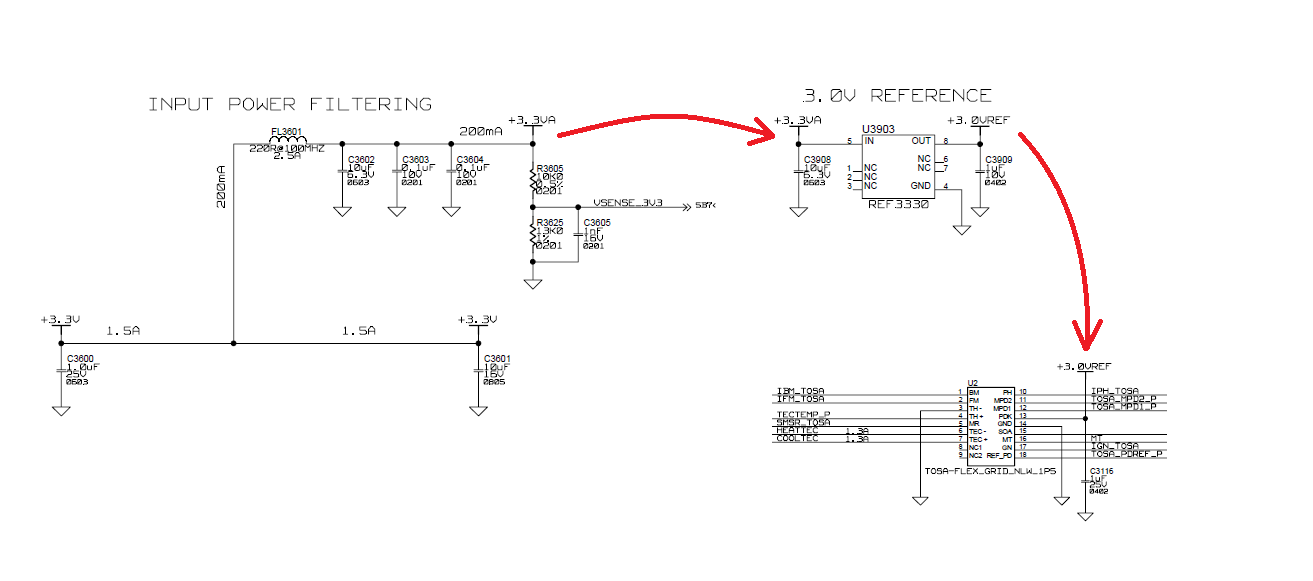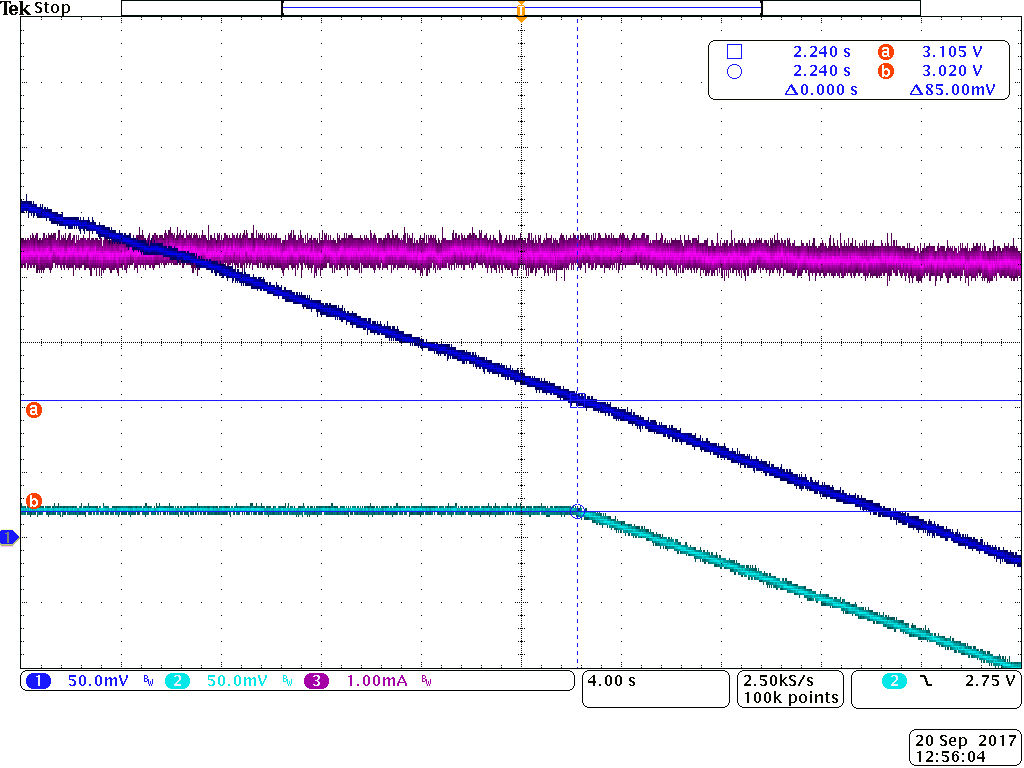Hello,
I'm writing to ask about operation of the REF3330 when in dropout.
Specifically here are my conditions:
VIN = 3.3V +/-5%
VOUT = 3.0V
IOUT = 4mA (max)
My questions are such:
1. Is the output voltage stable? Will the device turn off under these conditions?
2. Does the output voltage start to decline when the input voltage declines past the point of dropout?
3. What about noise? Will input noise ripple through to the output when the device is operating in dropout?
Many thanks in advance!
Don



